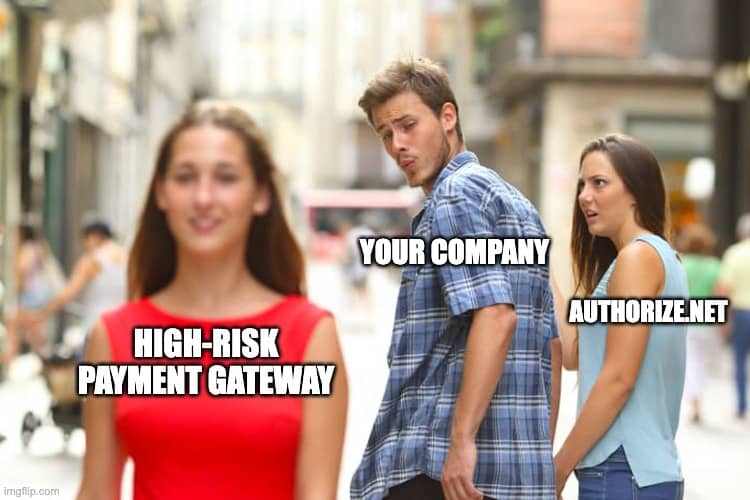ACH Reason Codes: Credit Entry Refused by Receiver R23

Credit entry refused by the receiver (R23) is a significant headache for businesses that work with customer invoices. It means that the receiver is prohibited from accepting the credit entry, which can cause delays in getting paid or cause other problems for your business. When dealing with an R23, it’s essential to understand what it means and how to resolve it as quickly as possible. This article will cover everything you need to know about R23, from common reasons to tips for improving credit entry acceptance.
Table of contents
- What is Credit Entry Refused by Receiver (R23)?
- Common Reasons for R23
- How to Resolve R23
- How to Avoid R23 in the Future
- Tips for Improving Credit Entry Acceptance
- Understanding the Different Types of R23 Codes
- How to Handle R23 promptly
- What to Do After Receiving an R23 Notice
- The Benefits of Working with a Credit Entry Expert
- Conclusion
What is Credit Entry Refused by Receiver (R23)?
Credit entry refused by the receiver (R23) is code banks, and other financial institutions use to indicate that the receiver has refused to accept the credit entry. It typically occurs when the receiver has identified a problem with the invoice, such as incorrect information or discrepancies between the invoices and the bank’s records. When this happens, the receiver sends a notice to the sender, which includes the R23 code. This code alerts the sender that the invoice has been refused and that further action is needed to resolve the issue.
Common Reasons for R23
There are several reasons why a receiver might refuse a credit entry. The most common causes include the following:
- Incorrect or outdated information on the invoice.
- Discrepancies between the invoice and the receiver’s records.
- A mismatch between the sender’s bank information and the receiver’s bank information.
- Need more funds in the receiver’s account.
- The receiver has exceeded its credit limit.
In some cases, the sender may also receive an R23 code if the invoice is sent to the wrong bank account or if the sender has not followed the necessary procedures for processing the invoice. It’s essential to understand the reason for the R23 code to take the appropriate steps to resolve the issue.
How to Resolve R23
The first step to resolving an R23 code is to contact the receiver and ask for details about the issue. The receiver should provide information about the discrepancies or other problems that led to the R23 code. Once the sender has this information, they can work to correct the issue and resend the invoice. The sender should also ensure that the receiver’s bank information is up-to-date and correct.
If the receiver cannot provide any information about the R23 code, the sender may need to contact their bank or the receiver’s bank. Banks typically have processes in place to help resolve R23 regulations, and they may be able to provide more information about the issue. The sender should also ensure that they keep detailed records of all correspondence with the receiver and the banks in case future disputes occur.
How to Avoid R23 in the Future
The best way to avoid an R23 code is to ensure that invoices are accurate and sent to the correct bank account. The sender should also check that the receiver’s bank information is up-to-date and accurate. Finally, the sender should also be aware of any credit limits the receiver has in place and ensure that the invoice does not exceed those limits.
Tips for Improving Credit Entry Acceptance
Senders can take several steps to improve the chances of their credit entry being accepted by the receiver. First, they should make sure that the invoice is accurate and complete, with all of the necessary information included. The sender should also verify that the receiver’s bank information is up-to-date and correct.
In addition, the sender should also be aware of any credit limits the receiver has in place. If the invoice exceeds the receiver’s credit limit, the sender should contact the receiver and request that the limit is increased. Finally, the sender should get the receiver if discrepancies exist between the invoice and the receiver’s records.
Understanding the Different Types of R23 Codes
R23 codes can be classified into four categories, depending on the reason for the refusal. These categories are:
- R23A: The receiver needs more funds in the account.
- R23B: The receiver has exceeded its credit limit.
- R23C: The sender must follow the necessary procedures to process the invoice.
- R23D: There needs to be a better match between the sender’s and receiver’s bank information.
It’s essential to understand the specific code to take the appropriate steps to resolve the issue.
How to Handle R23 promptly
When a sender receives an R23 code, it’s crucial to take action as quickly as possible. The sender should contact the receiver to get more information about the issue and work to resolve it. If the sender cannot resolve the issue, they should contact the receiver’s bank or the sender’s bank for assistance. It’s also important to keep detailed records of all correspondence in case there are any future disputes.
What to Do After Receiving an R23 Notice
Once the sender has received an R23 notice, they should take action to correct the issue as quickly as possible. The sender should contact the receiver to get more details about the problem and work to resolve it. If the sender cannot resolve the issue, they should contact the receiver’s bank or the sender’s bank for assistance. In addition, the sender should also take steps to avoid similar problems in the future.
The Benefits of Working with a Credit Entry Expert
If you need help resolving an R23 code or looking for ways to improve credit entry acceptance, working with a credit entry expert may be beneficial. A credit entry expert can provide invaluable advice and guidance on resolving R23 codes and improving credit entry acceptance. They can also help you identify any potential issues with invoices and provide solutions to ensure that receivers accept credit entries.
Conclusion
Dealing with a credit entry refused by the receiver (R23) can be a significant headache for businesses. It’s essential to understand what it means and how to resolve it as quickly as possible. This article has provided an overview of R23, from common reasons to tips for improving credit entry acceptance. If you need help resolving an R23 code, working with a credit entry expert may be beneficial to ensure that receivers accept your invoices.
Want more information on how we can help your business thrive and integrate your payment processing with an ACH gateway? Contact us today, and learn more about what Zenti can offer you.
Read Next

Find out whether Authorize.Net works for high risk merchants, what restrictions you might face and how to get approved.

Get expert advice on selling CBD products on Shopify, including compliance tips and setting up secure payment options.

Find out why Square may deactivate merchant accounts and steps to resolve issues and maintain uninterrupted payment services.
Need a High-Risk Merchant Account?
Disruption-free payment processing at the best price for your situation, guaranteed.
Get Free Guidance Now!